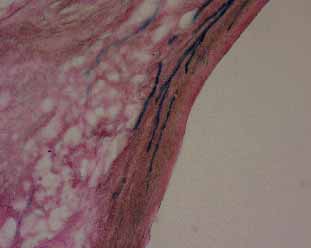Sunday, November 3, 2002 - 10:27 AM
843
Re-Defining Flap Ischemia and Neovascularization Through the Perspective of Vascular Stem Cells
Our understanding of neovascularization has changed dramatically following the recent discovery of endothelial progenitor cells (EPCs) in human peripheral blood. While various fields of medicine have come to appreciate the role of EPCs in new blood vessel growth, their participation in conditions directly related to plastic surgery is yet unknown. We studied the extent to which flap ischemia mobilized EPCs from the bone marrow (BM) and induced their formation into vascular structures.
METHODS: A bone marrow transplantation model was established in order to distinguish BM-derived EPCs from all other cells. Lethally irradiated FVB mice were transplanted with BM cells from transgenic mice constitutively overexpressing b-galactosidase (lacZ) regulated by the endothelial-specific tie-2 promoter. Reconstitution of the transplanted BM yields mice in which expression of LacZ is restricted to EPCs derived from the BM. A cranially-based random skin flap model was created in these mice, leading to reproducible zones of ischemia. Whole back skin specimens were taken at selected time points after flap elevation (3, 7, and 14 days) and were assayed with X-gal solution. Histological sections counterstained with eosin were used to identify b-gal positive (blue) cells by histochemistry.
RESULTS: EPCs were mobilized and recruited to the area of ischemia as early as 3 days. At day 14, EPCs began to incorporate into vessels and created a vascular networks.(figure) Remarkably, the configuration of this vascular network was parallel to the axis of the flap and was oriented toward the ischemic gradient (sprouting from healthy, less-ischemic tissue to the more ischemic distal areas).
CONCLUSIONS: We demonstrated that EPCs play an important role in neovascularization induced by flap ischemia. Furthermore, flap ischemia led the formation of new blood vessels in the direction of the ischemic gradient. Further investigation will elucidate the role of EPCs in related ischemic conditions.(i.e. delay phenomenon)

View Synopsis (.doc format, 4.0 kb)
